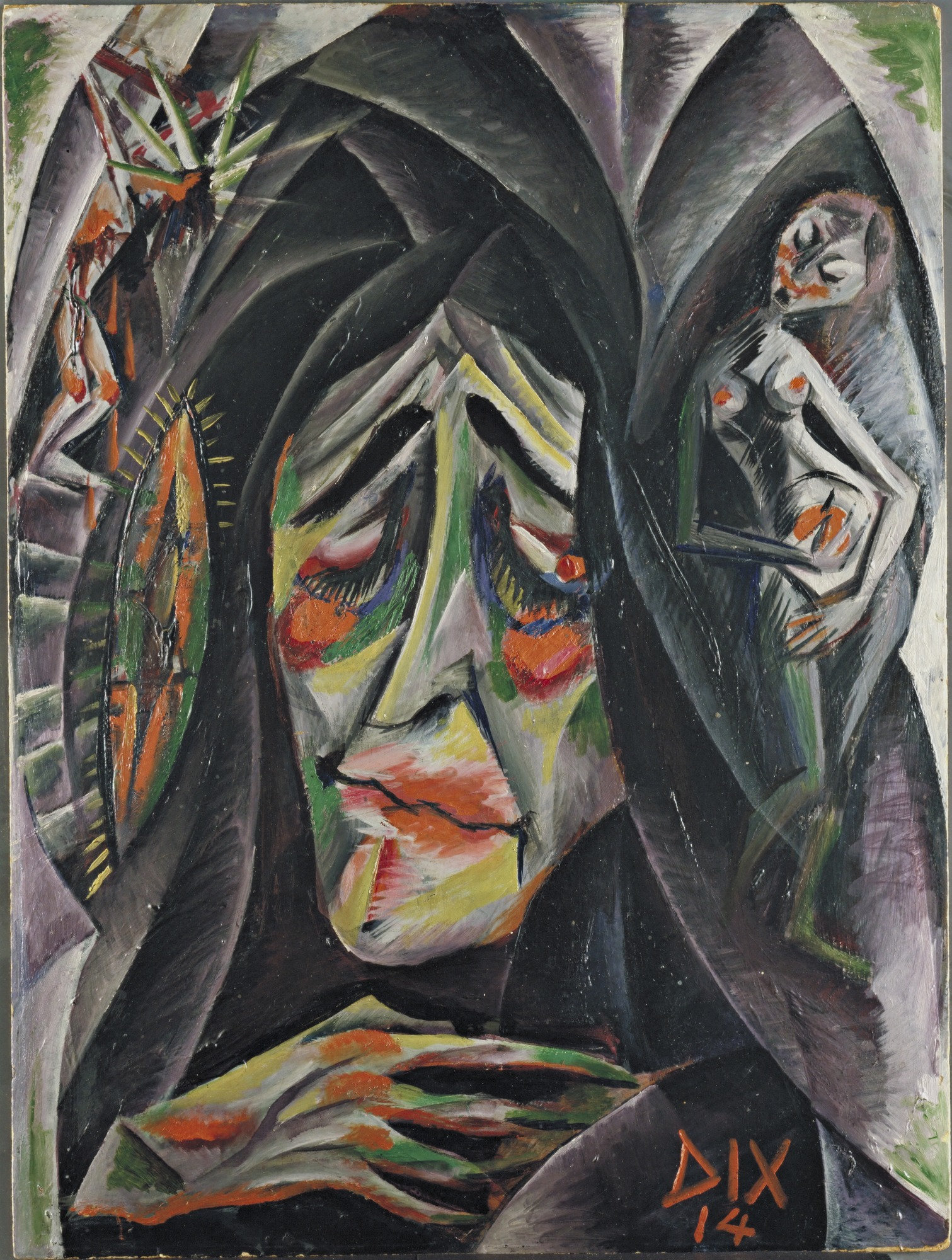Otto Dix (1891-1969)
Otto Dix was a German painter and printmaker, known for his grotesque portrait paintings, brutal depictions of war and the Weimer society. Exposed to artwork at an early age, Dix spent a lot of time in his older cousin’s art studio, Fritz Amman who was a landscape painter. Between 1906 and 1910, he served an apprenticeship with painter Carl Senff, learning to paint landscapes. In 1910, he entered the Kunstgewerbeschule in Dresden (Academy of Applied Arts), where Richard Guhr was among his teachers.

WWI was an event that profoundly shaped Dix’s artwork. He volunteered for the War in 1915 and was discharged in 1918. Throughout the war, Dix kept a diary and sketchbook to record his experiences. His sketches served as material for a major series called, “The War” which was published in 1924. Most of these experiences were horrific and therefore many of his illustrations expressed some form of trauma. WW1 affected the development of Expressionism because many artists wanted to convey their emotional experience that affected them during the war. Whether because they were a soldier or not, they were emotionally scarred and wanted to show the emotional violence or hatred of the war.

Dix later became a founder of the Dresden Secession group in 1919, during his expressionist phase. In 1920 he met George Grosz. Influenced by Dada, he began incorporating collage elements into his works, some of which he exhibited in the first Dada Fair in Berlin.


Sources:
https://www.moma.org/artists/1559
https://www.wikiart.org/en/otto-dix
http://www.artnet.com/artists/otto-dix/
http://www.visual-arts-cork.com/famous-artists/otto-dix.htm
Images:
https://d32dm0rphc51dk.cloudfront.net/KuIEly7iZ2MBLs0HexS0yw/larger.jpg
https://www.moma.org/s/ge/collection_images/enlarge/84/79284.jpg